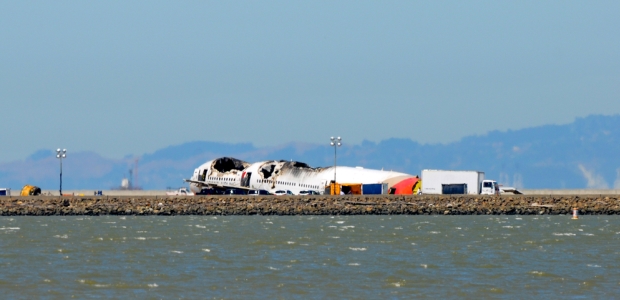
NTSB Opens Asiana Crash Hearing
The safety board's experts are explaining why the pilots failed to correct a landing approach that was too low and slow, causing the July 2013 crash at San Francisco International Airport.
The National Transportation Safety Board held its first public hearing today about the July 16, 2013, crash of Asiana Flight 214 at San Francisco International Airport, with board experts explaining their findings and releasing an animation of the accident sequence. The animation ends with a few seconds of video showing the impact, fire, and the aircraft crashing onto the runway.
Board experts are being questioned by NTSB board members about the flight crew's actions during the approach and also about Asiana’s standard operating procedures. Acting NTSB Chairman Christopher Hart opened the hearing by offering condolences to families of three passengers who died in the crash and to passengers who were injured and their families.
"The report also answers the basic question about the accident itself: Why did this airplane crash while executing a visual approach on a clear day?" Hart said. "It is one of the most sophisticated and automated aircraft in service. Automation has unquestionably made aviation safer and more efficient, but the more complex it becomes, the more challenging it is to be sure that pilots adequately understand it. In this instance, they over-relied on systems they did not understand and flew the aircraft too low and slow, colliding with a seawall at the end of the runway. More than 15 years ago, Professor James Reason wrote that in their efforts to compensate for the unreliability of human performance, designers of these control systems have created opportunities for new error types that can be more serious than those they were seeking to avoid. Today, we will discuss many recommendations in the report that address how humans interact with automation to prevent similar accidents in the future."
NTSB staffers have prepared 30 findings based on their investigation. One is that while the airport's instrument landing system glide slope was out of service during this incident, that should not have resulted in a crash. Another cites automation reliance and fatigue as factors affecting the flight crew's performance.
This was the first time the flying pilot had flown a visual approach without a glide slope, and he had an inadequate understanding of the auto throttle engagement feature on this B777 aircraft, according to the staff's presentation.